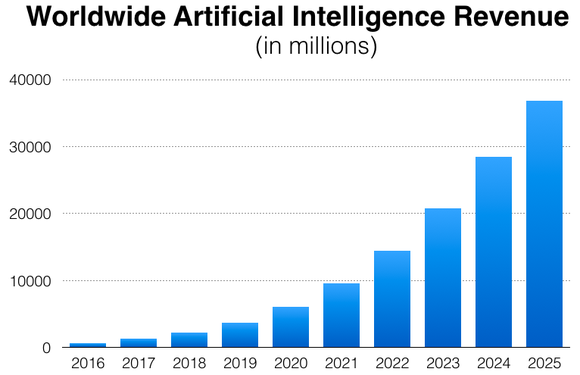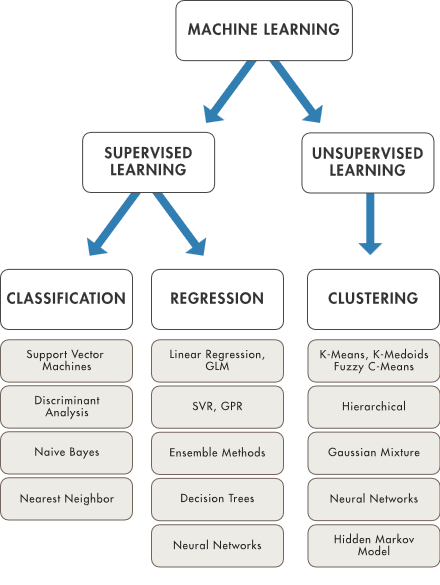Introduction:
Machine learning is the science of getting computers to act without directly programming them. Learning in this context is not learning by heart but recognizing complex patterns and make intelligent decisions based on data. Machine Learning develops algorithms that discover knowledge from specific data and experience, based on sound statistical and computational principles. It evolved from the study of pattern recognition and computational learning theory in artificial intelligence, machine learning explores the study and construction of algorithms that can learn from and make predictions on data – such algorithms overcome following strictly static program instructions by making data-driven predictions or decisions, through building a model from sample inputs.
It is considered to be the driving force for speech recognition technologies, self-driving cars, effective or focused web search, and a vastly improved understanding of the human genome. It is so widely spread in the current day that we use it a lot, without even noticing.
History of Machine Learning:
The name machine learning was coined in 1959 by Arthur Samuel. He wrote the first computer learning program, a game of checkers at IBM. The 90’s can be considered as one of the golden eras of Machine Learning. During the decade there were significant contributions to the field. The intersection of computer science and statistics gave birth to probabilistic approaches in AI which shifted the field further toward data-driven approaches from which researchers developed an interest in artificial intelligence where they wanted to see if computers could learn from data and machine learning grew out of the quest for artificial intelligence.
Importance of Machine Learning:While artificial intelligence (AI) is the broad science of mimicking human abilities, machine learning is a specific subset of AI that trains a machine how to learn. Watch this video to better understand the relationship between AI and machine learning. The rising popularity of Machine learning is because of the same factors that have made data mining and Bayesian analysis more popular than ever. Things like growing volumes and varieties of available data, computational processing that is cheaper and more powerful, and affordable data storage. With Machine learning, it's possible to quickly and automatically produce models that can analyze bigger, more complex data and deliver faster, more accurate results even on a very large scale. And by building precise models, an organization has a better chance of identifying profitable opportunities or avoiding unknown risks.
Machine Learning Methods and How they Work ?
The two most widely used Machine learning methods are supervised learning and unsupervised learning which find hidden patterns or intrinsic structures in input data. Other techniques include ensembled learning, Meta-learning, semi-supervised learning, reinforced learning etc..
- Supervised machine learning builds a model that makes predictions based on evidence in the presence of uncertainty. A supervised learning algorithm takes a known set of input data and known responses to the data (output) and trains a model to generate reasonable predictions for the response to new data. Use supervised learning if you have known data for the output you are trying to predict.
- Unsupervised learning finds hidden patterns or intrinsic structures in data. It is used to draw inferences from datasets consisting of input data without labeled responses.
Choosing the right algorithm:
With dozens of supervised and unsupervised machine learning algorithms available, and each takes a different approach to learning, there is no best method or one size fits all. Finding the right algorithm is partly just trial and error—even highly experienced data scientists can’t tell whether an algorithm will work without trying it out. But algorithm selection also depends on the size and type of data you’re working with, the insights you want to get from the data, and how those insights will be used.
Machine Learning vs Data Mining:
The main difference between Machine Learning and Data mining is that just like statistical models, the goal is to understand the structure of the data – fit theoretical distributions to the data that are well understood. So, with statistical models, there is a theory behind the model that is mathematically proven, but this requires that data meets certain strong assumptions too. Machine learning has developed based on the ability to use computers to probe the data for structure, even if we do not have a theory of what that structure looks like. The test for a machine learning model is a validation error on new data, not a theoretical test that proves a null hypothesis. Because machine learning often uses an iterative approach to learn from data, the learning can be easily automated. Passes are run through the data until a robust pattern is found.
Where is Machine Learning Applied in the real world?
Most industries working with large amounts of data have recognized the value of machine learning technology. Today, organizations are able to work more efficiently or gain an advantage over competitors.
Financial services: Banks and other businesses in the financial industry use machine learning technology for two key purposes: to identify important insights in data, and prevent fraud. The insights can identify investment opportunities, or help investors know when to trade. Data mining can also identify clients with high-risk profiles, or use cyber surveillance to pinpoint warning signs of fraud.
Government: Government agencies such as public safety and utilities have a particular need for machine learning since they have multiple sources of data that can be mined for insights. Analyzing sensor data, for example, identifies ways to increase efficiency and save money. Machine learning can also help detect fraud and minimize identity theft.
Healthcare: Machine learning is a fast-growing trend in the healthcare industry, thanks to the advent of wearable devices and sensors that can use data to assess a patient's health in real time. The technology can also help medical experts analyze data to identify trends or red flags that may lead to improved diagnoses and treatment.
Marketing and sales: Websites recommending items you might like based on previous purchases are using machine learning to analyze your buying history – and promote other items you'd be interested in. This ability to capture data, analyze it and use it to personalize a shopping experience (or implement a marketing campaign) is the future of retail.
Oil and gas: Finding new energy sources. Analyzing minerals in the ground. Predicting refinery sensor failure. Streamlining oil distribution to make it more efficient and cost-effective. The number of machine learning use cases for this industry is vast – and still expanding.
Transportation: Analyzing data to identify patterns and trends is key to the transportation industry, which relies on making routes more efficient and predicting potential problems to increase profitability. The data analysis and modeling aspects of machine learning are important tools to delivery companies, public transportation, and other transportation organizations.
Innovative companies in Machine Learning / Artificial Intelligence:
According to Fast Company, the World's Most Innovative Companies in the AI/Machine Learning sector are ranking:
- Google - For developing a photographic memory
- IBM - For embedding Watson where it's needed most
- Baidu - For accelerating mobile search with artificial intelligence
- SoundHound - For giving digital services the power of human speech
- Zebra - Medical Vision - For using deep learning to predict and prevent disease
- Prisma - For making masterpieces out of snapshots
- Iris AI - For speeding up scientific research by surfacing relevant data
- Pinterest - For serving up a universe of relevant pins to each and every user
- TrademarkVision - For advancing brand protection with AI-powered image recognition
- Descartes Labs - For preventing food shortages by predicting crop yields
Want to learn Machine Learning ?
- Machine Learning by Tom M Mitchell - Book
- Pattern Recognition and Machine Learning - by Christopher M Bishop - Book
- Online lessons
Currently, Machine learning (ML) research is producing impressive advances on some fundamental issues. These include scaling up ML methods to large sample and dimension sizes, finding the productive balance between generative and discriminate approaches, and focusing attention on the most useful data (e.g., active learning). We expect steady progress on these core areas of ML research in coming years. Some core ML research directions are especially likely to further the partial automation of scientific processes. These include learning from nonvector data such as labeled graphs, text, and images; multi-scale methods for large-scale optimization in inference; and feature selection to find the most relevant aspects of large data sets.
The revenue which companies would be making in the future using Artificial intelligence - Machine learning is shown in the below graph.

Some of the machine learning trends that could become a reality in the near future:
- Intelligence on the Cloud
- Quantum Computing Capabilities
- Improved Personalization
- High-Quality Data generation
About the Author: Ananth Iyer
The writer of this article is a Ph.D. Student & Graduate Teaching Assistant for the Department Of Computer Science at The University of North Dakota. Sources:
https://science.sciencemag.org/content/293/5537/2051.full https://www.sas.com/en_us/insights/analytics/machine-learning.html https://www.mathworks.com/discovery/machine-learning.html https://digitalfullpotential.com/ai-applications-market-forecasts/

















Leave a Reply